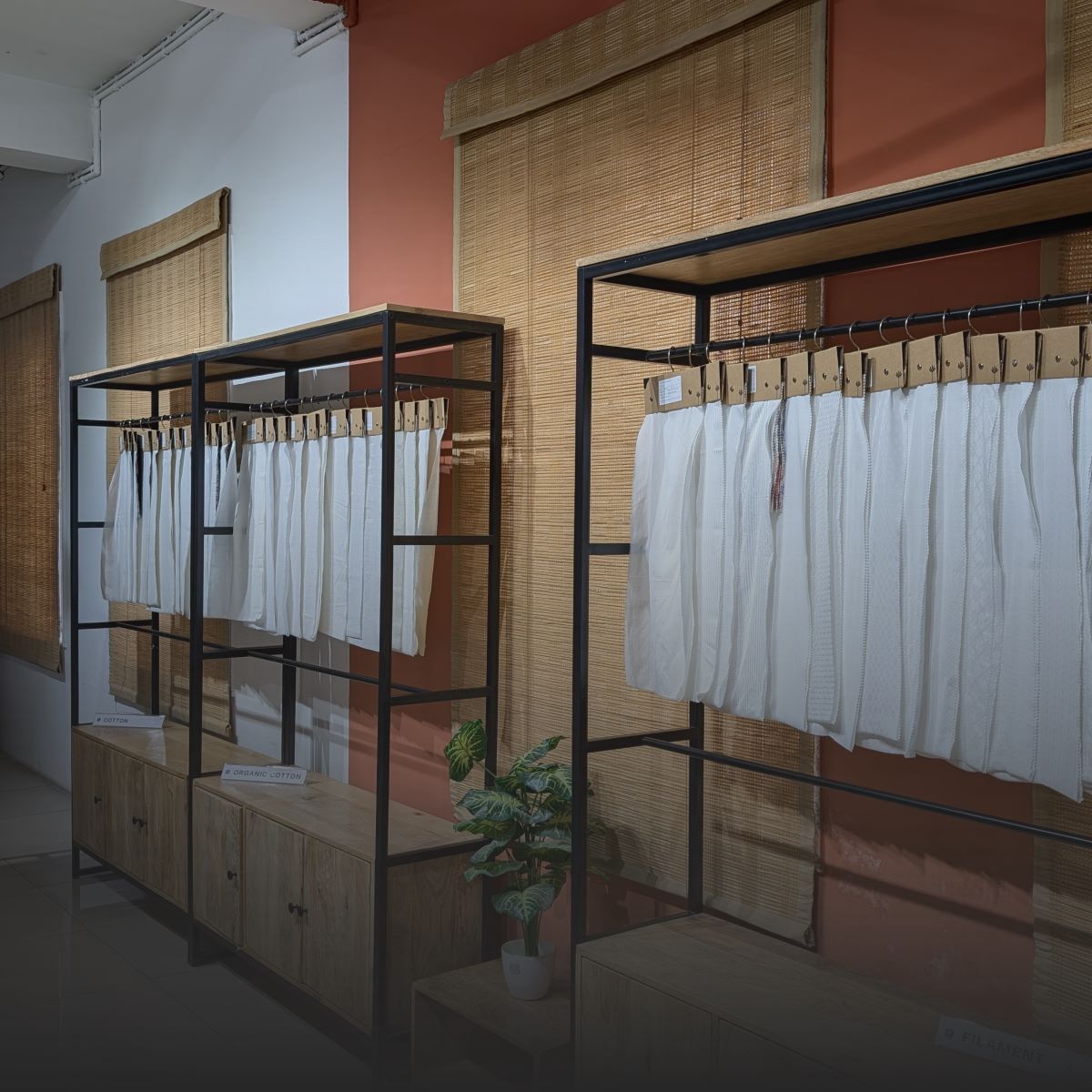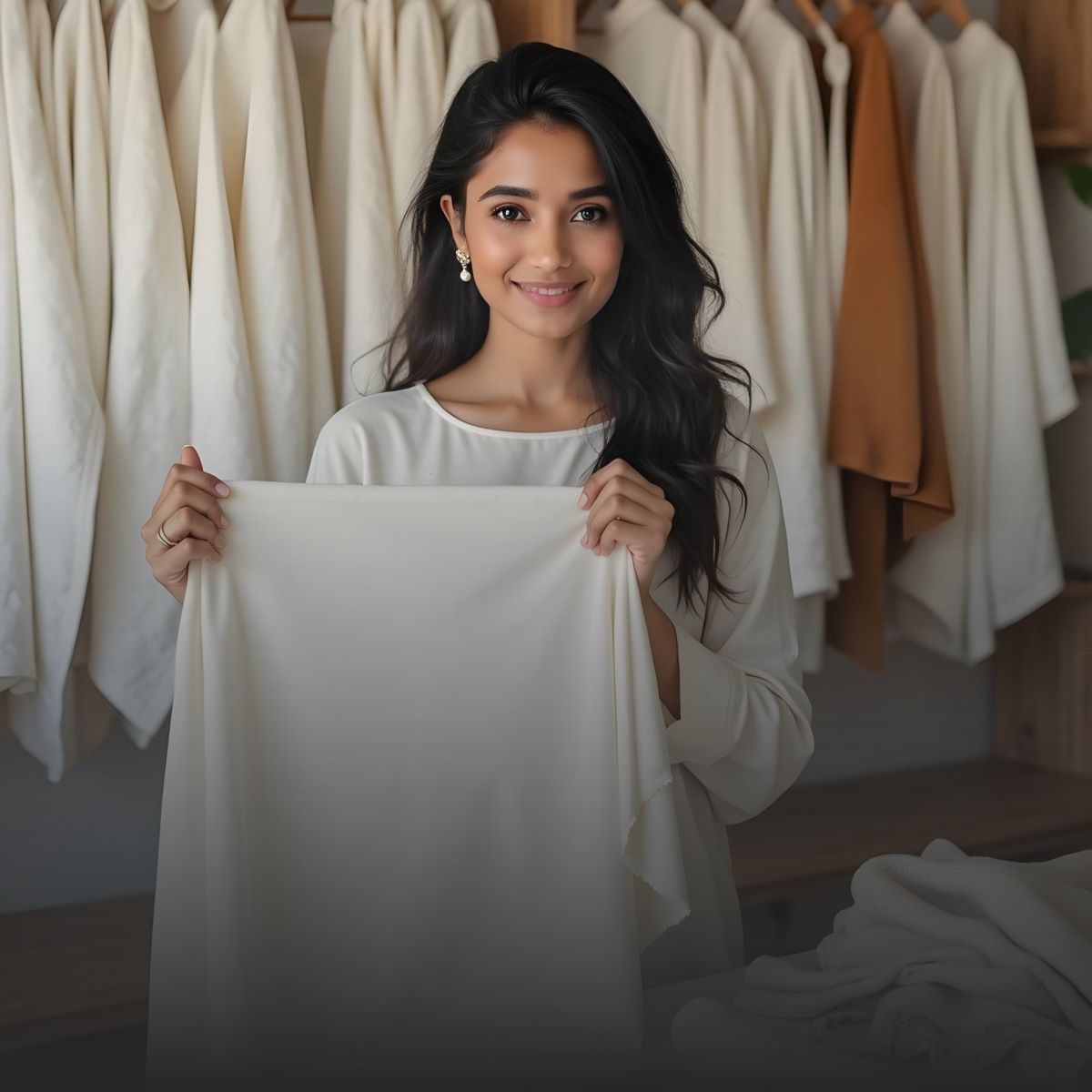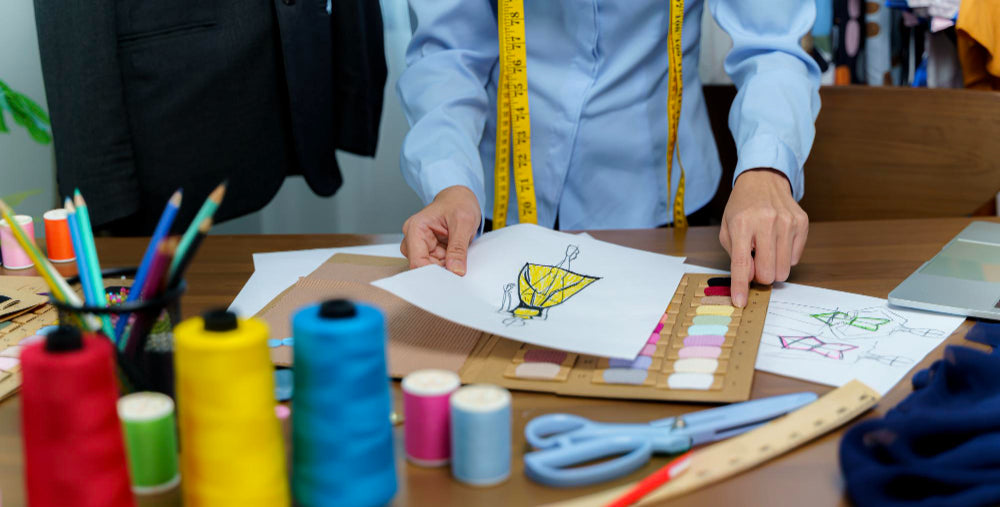To create your own kidswear designs on soft fabric, the key decision you'll face is choosing the appropriate kidswear fabric type and safe printing technique for children. Since kids have very delicate skin, factors like comfort, breathability, and safety are much more important than looks. No matter if you're a designer, boutique owner, private label brand, or startup, custom printed kidswear fabric can make you unique — but it must be soft, irritation-free, durable, and printed with non-toxic inks.
This article will reveal the top breathable materials for children's clothing, secure printing methods, a detailed printing procedure, common errors to steer clear of, and tips on sourcing and personalizing fabrics with low-MOQ kidswear printing options. You'll discover why Fabriclore — a global supplier with over a decade of experience in sourcing, dyeing, and printing fabrics — is a trusted partner for kidswear and children's apparel manufacturing around the world.
Why Printing Custom Kidswear Fabrics Is Growing Rapidly
Kids' clothing with custom prints is becoming more popular around the world because brands want to stand out and parents want their kids to look good and stay safe. Now that fabric sourcing, digital printing, and low-MOQ manufacturing are easier to access, even small businesses can start making custom kids' clothes.
More and more brands want to print on custom kids' clothes because:
- Unique & adorable designs
- Soft, breathable fabrics suitable for kids
- Low-MOQ production for small businesses
- Eco-friendly inks & safe dyeing techniques
- Long-lasting prints that feel soft on skin
Clothes that parents like are:
- Easy on skin that is sensitive
- Not too heavy and airy
- Absorbs sweat
- Soft and anti-static
- Not harmful and doesn't irritate
What Makes a Fabric Safe & Comfortable for Kids?
Because kids' skin is smaller and more sensitive than adults', choosing the right fabric is very important. A fabric that is safe for kids' clothes should not only feel soft but also let the skin breathe, stretch easily, and remain irritation-free even after daily use and many washes.
A safe substance for kids' clothes must be:
- Breathable
- Soft & non-abrasive
- Hypoallergenic
- Sweat absorbent
- Stretch-friendly
- Chemical safe & toxin-free
Based on these features, you can tell which fabrics are best for printing personalized patterns for kids.

Best Breathable & Comfortable Fabrics for Kidswear Printing
Every great children's clothing brand starts with making clothes that are comfortable for kids. Some fabrics are better than others worldwide for softness, breathability, and durability. Fabriclore offers all of these types in RFD, greige, or dyed forms with low MOQs.
All fabrics below are available through Fabriclore in RFD, greige, dyed, or ready-to-print bases, with low MOQs ideal for startups.
Below are the most preferred and safest kidswear fabrics:
1. Cotton (Best Overall for Kidswear)
Cotton is the gold standard for children's clothing due to its natural softness and breathability.
Why it's ideal:
- Highly breathable
- Soft & skin-friendly
- Sweat absorbent
- Hypoallergenic
- Easy to print with baby-safe inks
Best for:
T-shirts, rompers, baby suits, leggings, pyjamas
2. Cotton Jersey (Perfect for Everyday Wear)
A soft-knit fabric with natural stretch — ideal for active kids.
Benefits:
- The soft feel
- Easy to carry
- Easy to move around in
- Good to wear every day
Best for:
T-shirts, bodysuits, soft dresses
3. Cotton Rib (Great for Fit & Stretch)
Cotton rib fabric is stretchy and feels snug and comfy.
Benefits:
- Stretchy rib texture
- Excellent stretch recovery
- Perfect for a consistent fit
Best for:
Neckbands, leggings, dungarees, and armhole finishing
4. Rayon & Modal (Ultra Soft & Smooth)
You'll feel great in these fabrics because they are soft, airy, and light.
Benefits:
- Silky soft
- Breathable
- Anti-static
- Great drape
Best for:
Girls' dresses, skirts, nightwear, lounge sets
5. Bamboo Fabric (Naturally Antibacterial)
A luxury fabric for babywear and eco-conscious brands.
Benefits:
- Hypoallergenic
- Naturally antibacterial
- Moisture-wicking
- Eco-friendly
Best for:
Sensitive skin and premium babywear.
6. Linen Blends (Airy & Summer-Friendly)
Pure linen may feel slightly rough for kids, but linen blends are soft and breathable.
Benefits:
- Very breathable
- Lightweight
- Ideal for warm weather

7. French Terry (For Light Warmth & Comfort)
A soft knit fabric with a looped underside.
Benefits:
- Soft on the skin
- Gentle warmth
- Perfect for sweatshirts & joggers
Best Printing Techniques for Kidswear Fabrics
For kids' clothes, the printing has to be soft to the touch, safe, and long-lasting. Based on the fabric and design style, each printing method has its own pros.
The best ways to print on kids' clothes are shown in a clean, easy-to-compare table below.
Kidswear Printing Techniques
|
Printing Method |
Best For |
Key Benefits |
Fabriclore Support |
|
Digital Printing |
Cotton, rayon, modal, muslin, jersey |
Safe water-based inks, soft feel, detailed designs, eco-friendly |
Customized digital printed fabrics |
|
Screen Printing |
T-shirts, sets, casualwear |
Bold colors, long-lasting, cost-effective for bulk |
Low-MOQ screen printing |
|
Block Printing |
Artisanal, boutique kidswear |
Handmade look, natural dyes, premium craft appeal |
Heritage block printing |
|
Custom Dyeing |
Solid colors & children’s pastels |
Even dyeing, soft shades, Pantone match |
Reactive & pigment dyeing, custom Pantone |
|
3D Rubber Printing |
Trendy, tactile kidswear |
Raised texture, high durability |
3D rubber printing |
|
Sublimation Printing |
Polyester kidswear |
Vibrant, fade-resistant, durable |
Sublimation-ready support |
How to Print Your Own Kidswear Designs
It's easy to print your own fabric for kids' clothes if you follow a set plan. This makes sure that kids are safe, comfortable, and get good results that parents can trust.
Brands that make custom clothes for kids usually do these things:
Step 1: Finalize Your Print Theme
Kidswear trends include:
Animals, fruits, dinosaurs, alphabets, rainbows, florals, space, fairy tales, minimal pastels.
Step 2: Choose the Right Fabric
Match fabric with age group:
- Babies → cotton, muslin
- Toddlers → jersey, rib
- Kids → cotton + modal blends
Selecting the right fabric is the foundation of comfortable, safe, and durable kidswear. Before finalizing your material, always buy fabric swatches to feel the texture, check breathability, and see how the fabric reacts to printing. This helps you make the right decision before bulk fabric ordering or finalising your kids ' wear collection.
Step 3: Select the Right Printing Method
Digital printing is recommended due to child-safe inks and soft results.
Step 4: Prepare High-Resolution Artwork
Preferred formats: AI, EPS, PSD, TIFF, SVG.
Step 5: Request Swatches/Samples
Fabriclore provides sampling before bulk orders.
Step 6: Approve the Print Quality
Check for colour accuracy, softness, stretch recovery, and wash fastness.
Step 7: Start Production
Choose low MOQs to test your designs before scaling.
Mistakes to Avoid When Printing Kidswear Fabrics
Poor ease, fading, or skin irritation can all be caused by small mistakes. Don't make these usual mistakes:
- Choosing non-breathable fabrics
- Using harsh chemical-based inks
- Ignoring shrinkage/wash tests
- Skipping sample approval
- Choosing prints that are too large for kids' proportions
- Overlooking durability & colour fastness

Why Fabriclore Is a Trusted Choice for Kidswear Printing & Fabric Sourcing
Fabriclore has 10+ years of expertise in fabric sourcing, custom dyeing, printing, and full-scale garment manufacturing, making it one of the most reliable partners for global kidswear brands. Fabriclore really stands out because it can offer a complete fabric-to-fashion ecosystem under one roof. This means that brands have full control over safety, comfort, quality, and customisation.
Fabriclore offers consistent, safety-tested materials, reliable timelines, and full creative freedom to all its customers, whether they want to print their own kidswear fabrics or create a full line of kids' clothes. Their low minimum order quantities make them perfect for small companies and international private labels.
Fabriclore offers:
- Complete fabric range: RFD, greige, dyed fabrics - Cotton, Modal, Rayon, Jersey, Rib, Linen blends, Bamboo blends.
- Custom Printing: Digital, screen, block, 3D rubber printing.
- Low MOQs: Ideal for startups and boutique kidswear brands.
- On-demand dyeing: Pantone-matched kidswear shades.
- Full production ecosystem: Fabric sourcing → customisation → stitching.
- Optional paid lab testing: GSM, shrinkage, colourfastness.
- Kidswear manufacturing: For small businesses, private labels & international brands
Fabriclore's integrated system helps brands cut costs, speed up production, and maintain high quality, especially in kids' clothing.
Conclusion
It's fun and satisfying to print your own kidswear fabric, but only if you use safe fabrics, inks that won't hurt kids, and reputable suppliers. To make clothes that are soft and safe for your skin, choose mixes of cotton, jersey, rib, rayon, modal, and bamboo. Digital printing is still the best way to make prints that are bright, soft, and safe for babies.
Fabriclore has more than 10 years of experience and can help you find fabrics, print them digitally or on screen, dye them, and make small batches of clothes if you're ready to make your own kids' clothes or make unique fabrics for kids' clothes.
FAQs
1. What Is The Best Fabric For Kidswear Printing?
The best fabrics for painting on kids' clothes are cotton, cotton jersey, cotton rib, rayon, and modal because they let air flow, are soft, hypoallergenic, and very good for people with sensitive skin. You can easily paint on these fabrics, and they stay soft.
2. What Printing Method Is Safest For Kidswear?
The best way to print is digitally, which uses water-based inks that are safe for the skin. The print is soft, doesn't crack, and will last a long time even after being washed many times.
3. Can I Print My Own Custom Kids Wear Designs?
Yes. You can send your own art to Fabriclore and have it printed on more than 100 different fabric bases with a low minimum order quantity (MOQ). You can also ask for samples before making many to ensure the results are perfect.
4. Is Cotton Good For Kidswear?
When it comes to kids' clothes, cotton is the best choice. It is soft, flexible, sweat-absorbent, and naturally allergy-free. That's why most sets of clothes for babies, toddlers, and everyday kids are made from cotton.
5. Does Fabriclore Offer Custom Kidswear Manufacturing?
Yes. Fabriclore can do everything for kids' clothes, from finding the fabric to dying, printing, stitching, adding trims and labels, and finishing. With low MOQs, it's ideal for startups, boutiques, and private-label brands.
We also happen to be a magnet for suggestions, and would love to catch yours….throw us yours on hello@fabriclore.com
Also Read Related Blogs:
1. Design for Comfort: How Cotton Fabric Elevates Loungewear and Activewear
2. Started a Ladies and Kids' Wear Brand? Discover the Best Fabrics for Your Collection!
3. Looking for Solid Knit Jeans Fabric for Kids and All-Over Printed Jersey Fabric for Ladies?
4. I am a Fashion Designer with my own Design and Want to get it Print on Fabric?




